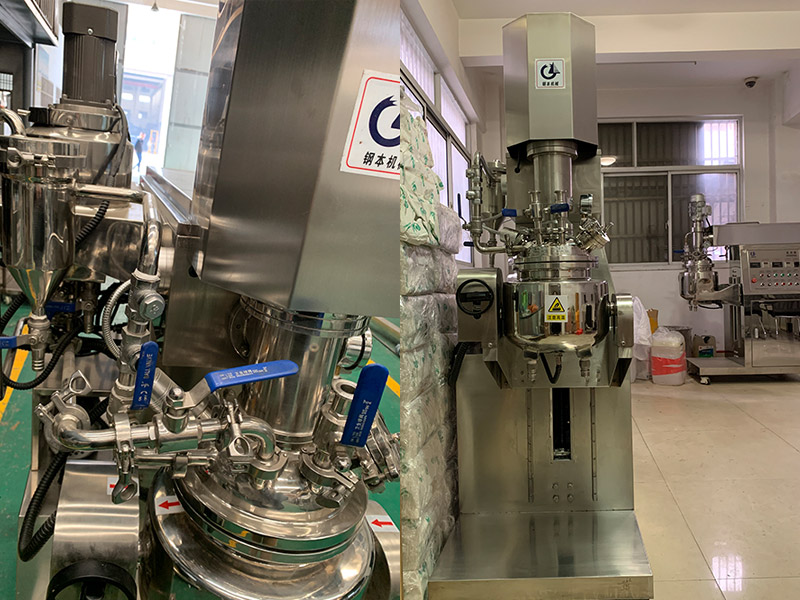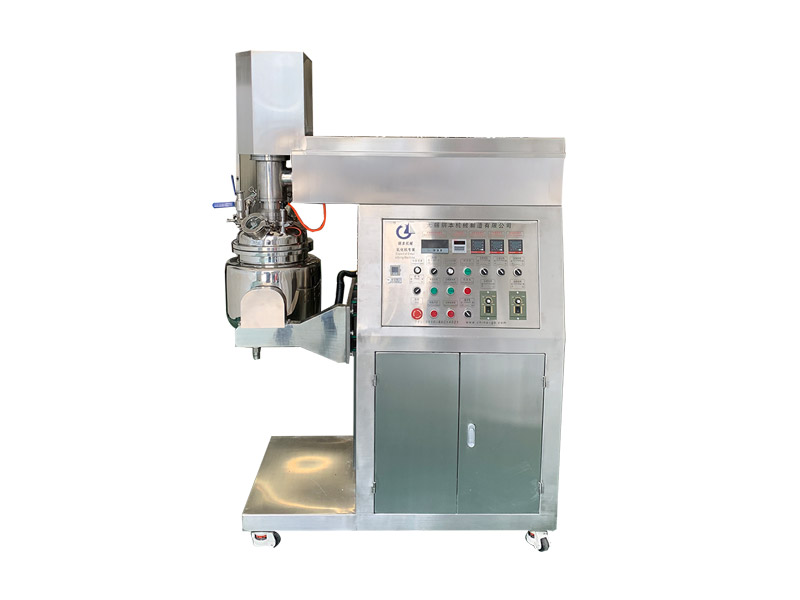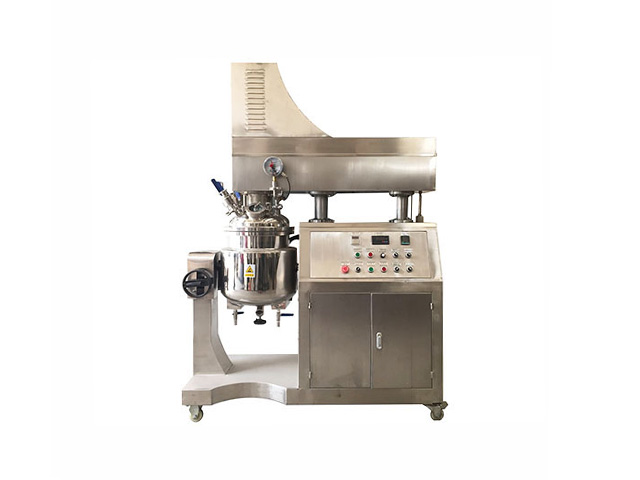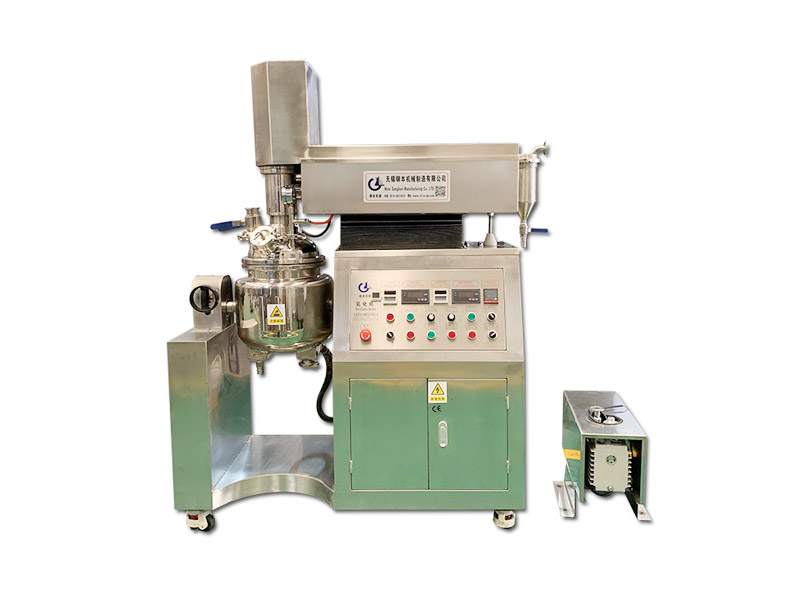Vacuum Emulsifying Mixer vs Traditional Mixer: Efficiency & Bubble-Free Mixing Comparison
In industries such as cosmetics, pharmaceuticals, food processing, and chemicals, the efficiency and quality of mixing equipment directly impact product performance and production profitability. Traditional mixers, with their single-axis stirring and ambient pressure operation, struggle to meet the demands of high-viscosity, high-solid-content, and bubble-sensitive materials. In contrast, vacuum emulsifying mixers leverage vacuum degassing, three-dimensional mixing, and high-shear homogenization to achieve breakthroughs in both efficiency and product quality. This article uses Jiangsu GangBen Mixer Manufacturer’s vacuum emulsifying mixers as a case study to compare their technical advantages over traditional mixers in real-world applications.
1. Core Technology & Structural Differences
1.1 Stirring System: From Single-Axis to 3D Mixing
Traditional mixers typically rely on single-direction or bidirectional stirring paddles, which depend solely on rotational speed for mixing. This approach often leads to layering or dead zones in high-viscosity materials (e.g., creams, silicones). For instance, a research institute reported that using a traditional mixer to process 50,000 cPs silicone required 24 hours of continuous stirring, yet still resulted in uneven consistency.
GangBen’s vacuum emulsifying mixer employs a dual-axis asynchronous rotation design—combining low-speed scraping (0-63 RPM) with high-speed homogenization (0-3,500 RPM). The scraper prevents material adhesion to the vessel walls, while the high-shear rotor generates a three-dimensional turbulent flow, achieving molecular-level dispersion in as little as 5 minutes. In a comparative study by Shanghai Institute of Technology, GangBen’s mixer improved ionic conductivity by 1.8× in polymer electrolyte processing, attributed to its bubble-free mixing capability.
1.2 Vacuum System: From Ambient Pressure to Negative Pressure Degassing
Traditional mixers operate under ambient pressure, allowing air to be trapped during mixing, forming microbubbles that degrade product stability and shelf life. For example:
Cosmetics: Bubbles in creams cause "pilling" during application.
Battery electrolytes: Bubbles reduce ionic conductivity.
GangBen’s vacuum emulsifying mixer integrates a precision vacuum system (down to -0.098 MPa / ~1 kPa absolute pressure), which forcibly removes dissolved gases and mechanical bubbles. In an mRNA vaccine production case, adopting GangBen’s mixer increased lipid nanoparticle encapsulation efficiency from 92% to 98.7%, thanks to gentle vacuum degassing that preserved biological activity.

1.3 Heating & Cooling: From Passive to Active Temperature Control
Traditional mixers often rely on external heat sources, leading to poor temperature uniformity and localized overheating. For example, chocolate processing requires temperature control within ±2°C to prevent fat separation.
GangBen’s mixer features a jacketed heating/cooling system supporting steam, thermal oil, or electric heating with ±1°C precision. Its internal circulation design maintains fluidity in high-solid-content materials (e.g., 40% solid pesticide suspensions), ensuring consistent mixing without clogging.
2. Efficiency & Quality Comparison: Data-Driven Validation
2.1 Mixing Efficiency: 50–80% Time Reduction
Traditional mixers: Processing 100 L of high-viscosity cream takes 4–6 hours, with frequent stops to clean wall buildup.
GangBen vacuum mixer: Hydraulic lifting and automatic scraping reduce batch time to 1.5–2 hours, tripling daily output. A cosmetics manufacturer reported increasing daily capacity from 2 to 6 batches using GangBen’s 50 L model.
2.2 Bubble Removal Rate: From 90% to 99.9%
Traditional mixers: Up to 10% bubble residue necessitates costly post-processing (e.g., centrifugal degassing).
GangBen vacuum mixer: Achieves <0.1% bubble retention, meeting GMP sterile production standards. A food company extended peanut butter shelf life from 6 to 18 months after switching to GangBen’s technology.
3. Industry Applications: From Lab to Mass Production
3.1 Cosmetics: Bubble-Free Cream Manufacturing
GangBen’s 200 L vacuum mixer for a global brand features dual homogenization + internal circulation, enabling simultaneous processing of water and oil phases. Its vacuum suction system prevents powder飞扬, achieving closed-loop production compliant with FDA and EU COSMOS standards.
3.2 Pharmaceuticals: Gentle Mixing for High-Potency Drugs
For an anticancer drug formulation, GangBen’s mixer combined low-speed
News
- Latest News
- Solutions
- FAQ
Recommend Products
-
 10L Vacuum Emulsifying Mixer
10L Vacuum Emulsifying Mixer10L Vacuum Emulsifying Mixer is a device used for emulsifying and mixing various substances in a vacuum environment. It is commonly used in industries such as food, cosmetics, and pharmaceuticals.
-
 20L Vacuum Emulsifying Mixer
20L Vacuum Emulsifying Mixer20L vacuum emulsifying mixer is a device used for emulsifying and mixing various substances in a vacuum environment. It has a larger capacity and is suitable for handling larger batches of materials.
-
 30L Emulsifying Homogenizer Mixer
30L Emulsifying Homogenizer Mixer30L Emulsifying Homogenizer Mixer is a high-speed emulsifying homogenizer mixer that is suitable for various emulsification and homogenization applications. It can be used to mix and emulsify various liquids, such as water, oil, and other liquids, to achieve a stable emulsion.


 English
English Russian
Russian French
French Spanish
Spanish Portuguese
Portuguese Korean
Korean Japanese
Japanese Thai
Thai





